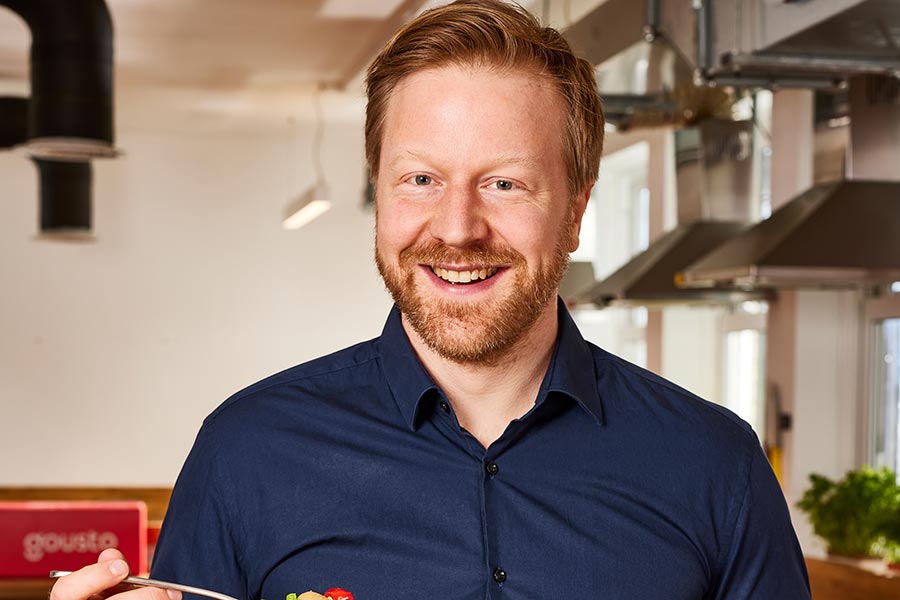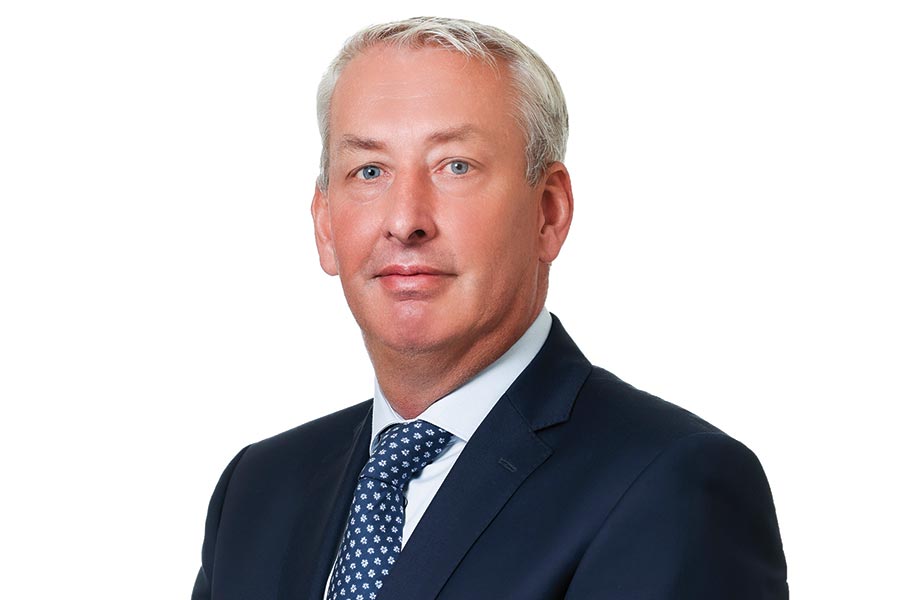San Francisco firm Gensler has turned a Quaker meeting house in Dublin’s Liberties into a stunning HQ for online marketplace Etsy. Designer Megan Dobstaff tells Marie Kelly about the transformation and explains why Irish heritage informed most of the project
With its panoramic views across Dublin city, abundance of natural light and timber references, Etsy’s new European headquarters makes you feel like you’re “in a treehouse perched in the sky”.
That’s according to Megan Dobstaff, design director at San Francisco design and architecture firm Gensler and lead designer on the project.
Occupying the 12,200 sq ft top floor of a 19th-century former Quaker meeting house in the Liberties, Etsy’s Dublin office balances the industrial aesthetic of its period structure, including original building trusses and columns, with a tactile tribute to Ireland’s unique ecosystem and heritage.
Employing local craftspeople, many of whom are sellers on the Etsy site, was key, Dobstaff explains, to ensuring any “localisation of the aesthetic” felt legitimate.
It was also a way of connecting employees to the marketplace they work for.
“Celebrating the art of making was our jumping-off point,” she says.
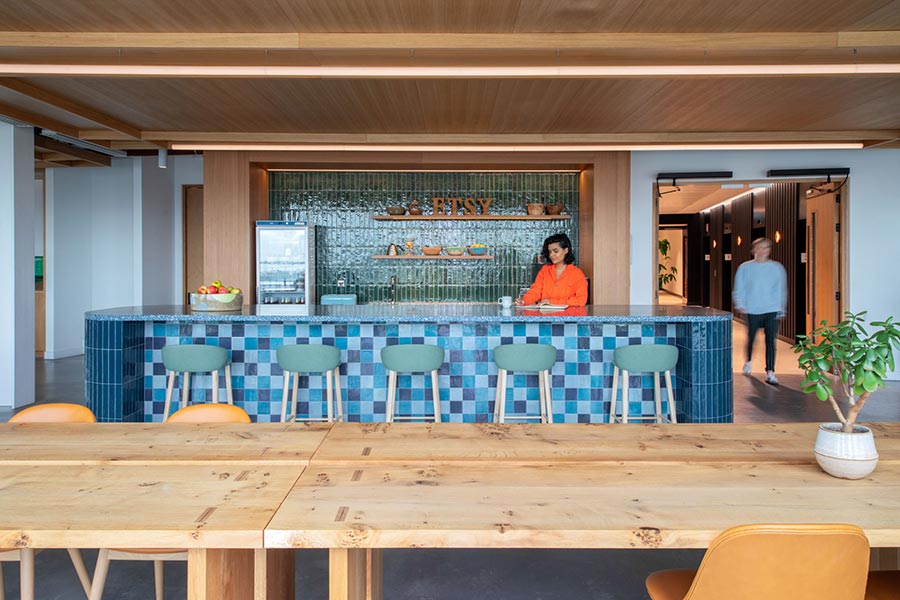
“It’s about using local craftspeople and artisans to bring character and creativity to a space.”
While some of the makers were British, most were Irish or Irelandbased.
“It takes many hands joining together to weave a story of vibrancy and community,” she says.
These hands included Donegal knitwear designer Pearl Reddington, who handknit the traditional Aran panels for the sweater lounge, a relaxation space where knitting and book clubs are hosted, and Killarney-based design house Studio Harris, which crafted the Irish oak and Valentia slate trivet dining tables.
Other collaborators included Dublin-based Kos Workspace, Mayo company Superfolk and Northern Ireland’s Orior Furniture.
It’s clear Dobstaff and her design team, which included an Irish employee, did enormous amounts of research to build a strong design vision that not only captured the imagination of the makers but delivered a visual narrative that felt convincing to employees.
Dobstaff has become fluent in the history of Ireland’s Aran sweaters and she articulated beautifully the palette and materiality of this country’s various habitats.
Spaces are dedicated to the Burren, Ireland’s wetlands and the island’s coastal scape.
“We call it geologising the terrain,” she explains.
They had bespoke hand-drawn wallpapers commissioned, one of which showcases all of the different tree leaves native to Ireland, and papered them across ceilings to create a point of difference.
“It’s good to flip a narrative on its head sometimes. Wallpaper on a ceiling brings a touch of the unexpected and it changes the energy,” she adds.
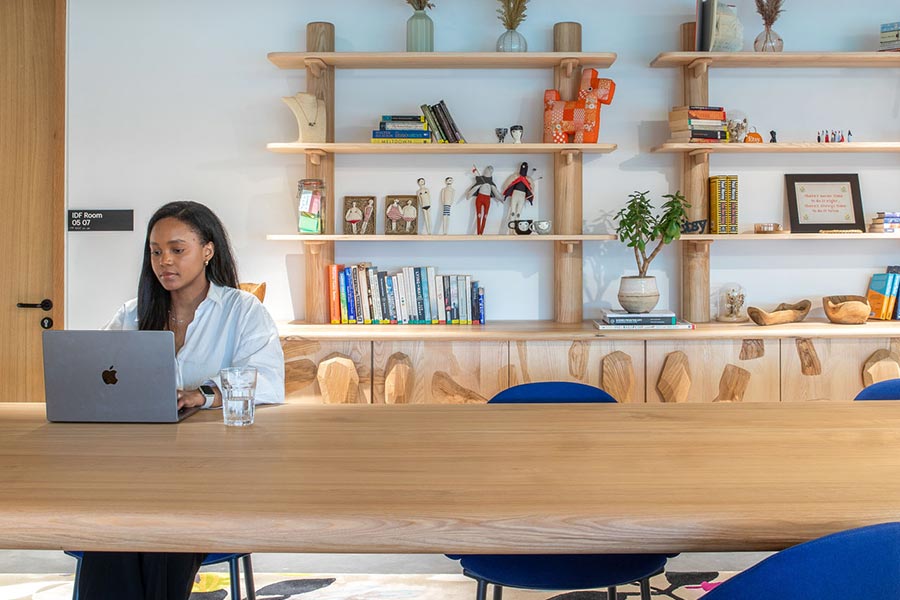
Energy is something this office is not short on, and it comes in large part from the considered use of lighting.
Within the mix of open spaces and specialty areas, which allow for collaboration and creativity as well as focus and solitude, Dobstaff explains they ensured there wasn’t only bright white light everywhere.
“The foam rooms, for instance, have a lower lit, golden tone, and we positioned a stained glass window so it would allow a filtered, dappled light to flood into an internal communal working space with no direct natural light.”
The incredible stained glass window — it’s more of a wall than a window — was designed by Canadian-born, Ireland-based digital artist Corrine Schroder in collaboration with Rathmines Glass and it showcases a level of creativity and investment in both the space and the employees’ welfare that isn’t often found in offices, even the trendy creative ones.
The fabrics and textiles are equally well considered and, unlike traditional office furnishings, they are neither devoid of texture nor colour.
“Handmade fabrics wouldn’t last in a corporate environment, but we chose a lot of nubby fabrics like worsted wool, some in rich autumnal hues and others in shades that reminded us of sheeps’ wool,” she says.
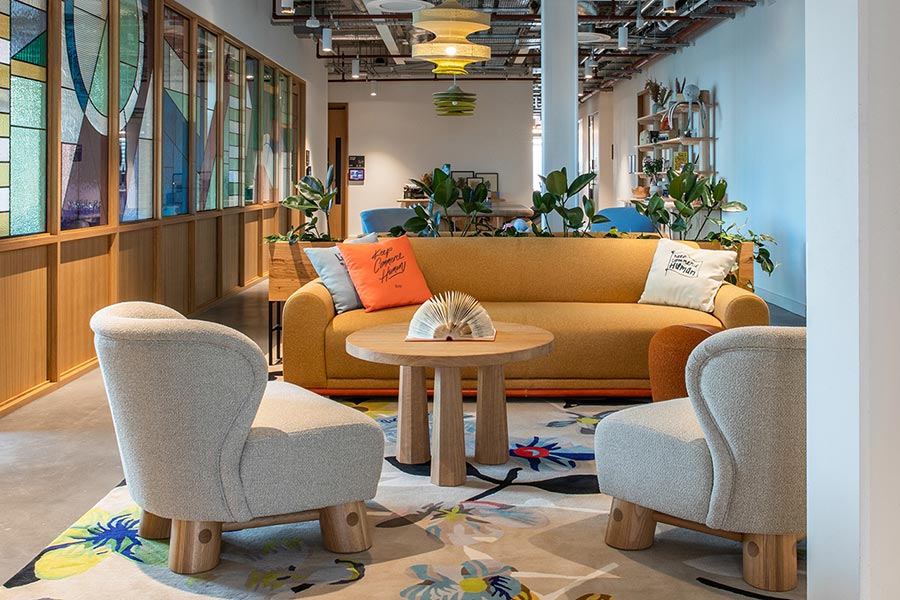
This tactility is mirrored in much of the furniture where classic corporate clean lines and sharp edges have been replaced with curves and rounded finishes, bringing a comfort level to the entire interior that’s inviting and inspiring.
Despite the current culture of remote working, it’s a very attractive proposition for any employee.






